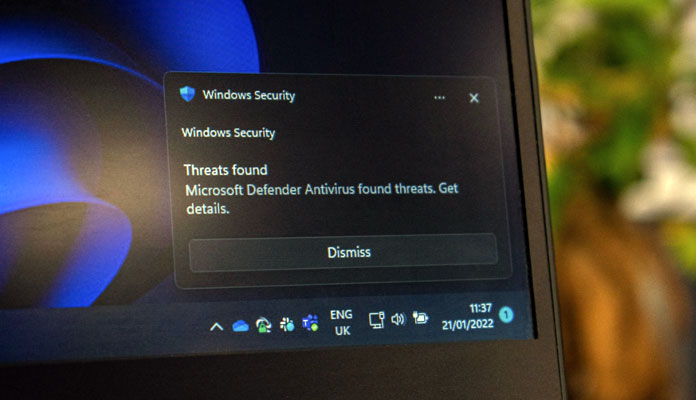Botnet malware has quietly become one of the most dangerous cyber threats of the digital age. Unlike traditional viruses that target a single device, botnets create entire networks of infected machines, often without the user’s knowledge. These “zombie” devices are then used to launch large-scale attacks, steal data, and spread further infections.
The trend of remote work, smart devices, and cloud systems is rising. Along with this, the scale and sophistication of botnet operations are increasing. Therefore, the workings of botnets and how to recognize and prevent them are no longer an option. It has rather become a necessity to ensure personal and organizational security.
Understanding Botnets: Why They’re a Growing Threat
What is a botnet attack? A botnet is a network of devices, which could be computers, routers, or even smart home appliances, that have contracted infections caused by malicious software. Once compromised, these zombie devices can undertake a wide range of malicious activities, from conducting a Meris DDoS botnet attack to performing data heists. Most botnet malware starts from phishing emails, fake software downloads, or unpatched vulnerabilities in outdated systems. The in-depth resource by Moonlock teaches you how to prevent such a dangerous botnet malware attack and how to mitigate one. The quick rise of botnets in cybersecurity positions them as one of the most dangerous threats.
One reason why botnets are spreading faster than ever is how easily they exploit user habits. Many of the infections happen silently; in fact, through the normal click of unknown links or skipping of software updates. Without proper defenses, even a single misstep can connect your device to a vast malicious network.
How Botnets Work Behind the Scenes
So, how does a botnet malware operate once it infects your devices? This section will dive deeper into these details.
The Role of Zombie Devices
Every botnet has a core of “zombies,” compromised machines that remote attackers control. Any internet-connected device is at risk. These include not only traditional computers and laptops but smart TVs, wireless routers, networked printers, and Internet of Things (IoT) devices like security cameras, thermostats, and even baby monitors.
In most cases, attackers trick a user into disclosing their account credentials, or the software vulnerabilities in the old firmware or operating systems could be exploited to gain access. Once the device is infected, the malware changes system settings to open ports for remote access, and from then on, it becomes part of a wider network that can be used to, for example, initiate a password attack from many different machines.
Communication and Commands
What is a botnet, and how does it work? Botnets work by coordinating commands between the attacker and zombie devices. This can take two main forms of structures of communication: centralized or peer-to-peer (P2P). In the first, all infected devices are made to connect back to a single command-and-control (C&C) server. This allows for fast execution and broad control, but can be shut down if the C&C server is identified.
On the contrary, P2P botnets disperse control among various devices, where each zombie has the potential to act as both a client and a controller. This makes the effort of takedown significantly harder, as there is no single point of failure.
Botnets hide their communications as well. Encrypted messages and stealthy internet protocols like HTTP or DNS tunneling, as well as randomized schedules, make it nearly impossible to detect. Some even come with algorithms that change their command servers on a regular basis to make it even more slippery and more resilient.
Spotting the Signs: Is Your Device Infected?

Botnet detection falls into finding the stealthiest of signs. Look for these as they can be indicative of their presence:
- Sluggish performance. Longer startup or shut-down time for your device, more frequent freezing or crashing of programs, and slower operation of simple routine tasks on low-end applications running on the system.
- High CPU usage. The fan is running all the time, even when the device is idle, and unfamiliar applications are running on your system, and your computer may be consuming resources due to running background tasks, but it gives no information on why.
- Strange things are happening in the background. Your device stays awake when it should be going into sleep mode, you find unexpected outbound network connections in your firewall logs, and new services you didn’t authorize to run appear under startup programs.
- Pop-ups or spam. You start receiving weird browser pop-ups or redirects when online, contacts report getting weird messages, and log-ins or messages you didn’t send, a reference to you accumulates in your email/social media activity log file.
Here is what you need to know: if you find one or several of these signs, it’s very likely that your device is part of a botnet, and it should be checked with a reliable security solution right away.
How to Stay Safe From Botnet Infections
Aside from knowing how to remove botnet malware, safety from botnet infections begins with regular digital cleanliness. Always keep your software, apps, and operating system updated to fix security holes. Use safe, unique passwords for all accounts and do not reuse them on different sites.
Turn on your firewall and use trustworthy antivirus or antimalware tools. If you think your device has been attacked, disconnect it from the internet right away, do a full scan, and get rid of any apps or extensions that look suspicious. Keep an eye out for more signs of strange activity to make sure the infection is gone.
Final Thoughts
Botnets have undergone a transformation from simple irritants to major cybercrime weapons that can reach anyone who has internet connectivity. With connected devices spreading so fast, we now have IoT botnets, a common phenomenon where everyday technology secretly turns into a part of a global threat. Being informed, following good security practices, and using reputable tools can keep your devices, and therefore your data, from ending up in the next attack.








